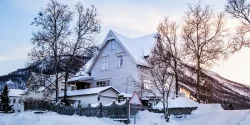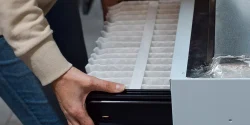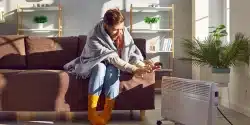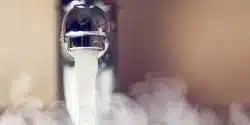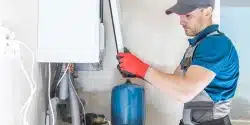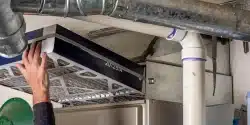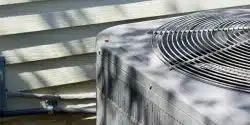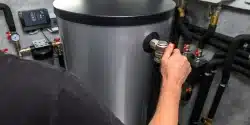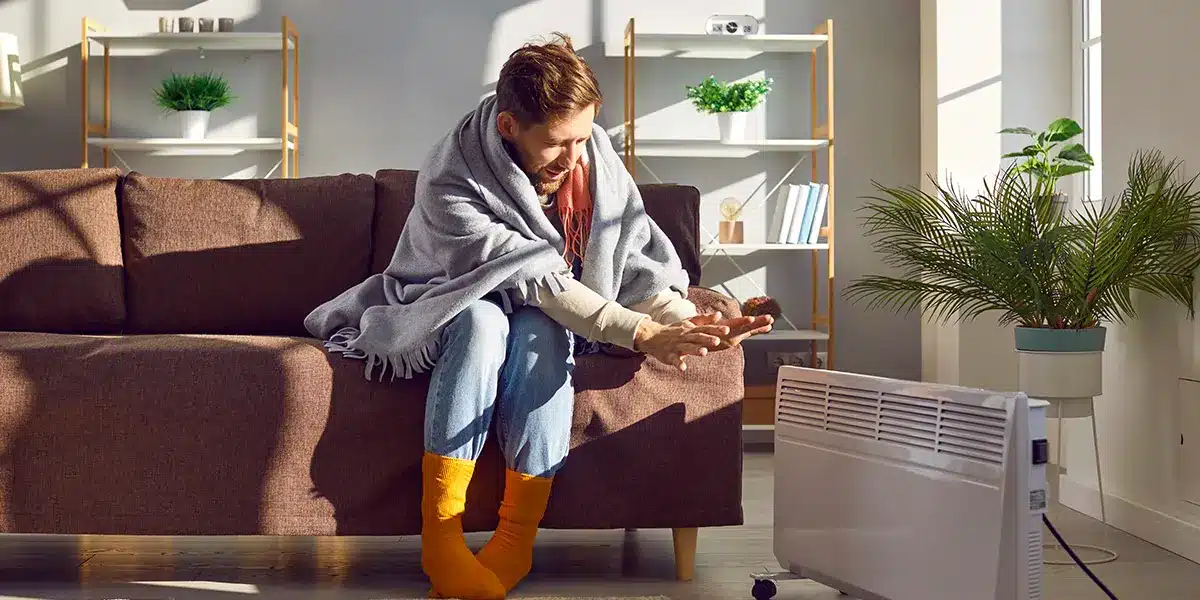
There’s nothing quite as frustrating as turning up the thermostat and feeling cold air from your furnace when you expect warmth. If your furnace is blowing cold air, there are several possible causes, many of which you can check yourself. Understanding these warning signs can help you decide whether it is a quick fix or if you need professional furnace repair
Common Reasons Your Furnace Is Blowing Cold Air
Here are real, well-documented causes for this problem. Most are things homeowners run into frequently.
1. Thermostat Settings or Problems
Sometimes the issue is simply that the thermostat is set incorrectly. If the system is still on “cool” or “off” mode, or the fan is set to “On” instead of “Auto”, the blower will run even when the furnace isn’t heating. In that case, cold air can come out of the vents without the heating elements being engaged.
A malfunctioning thermostat or dead batteries can also prevent proper communication with the furnace. Even when everything else is working, a broken thermostat might make the furnace behave as if it’s heating when it’s really not.
2. Clogged or Dirty Air Filter
One of the top culprits is a dirty air filter. When a filter is clogged, airflow gets restricted. That causes the furnace to overheat, and its safety mechanisms may cause it to shut off the burner or shut down the heat cycle. The blower might still run, pushing out cold air from unheated parts of the system. Replacing or cleaning the filter regularly often solves this issue.
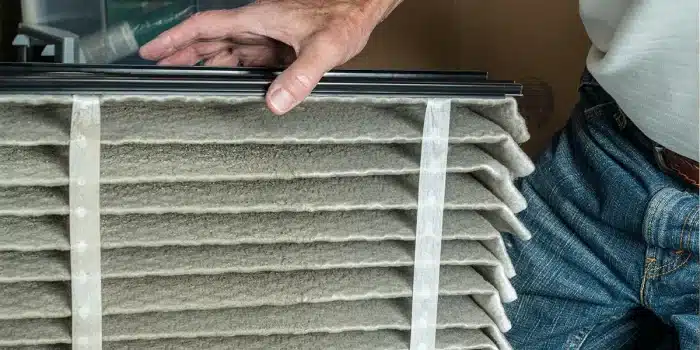
3. Pilot Light or Ignition Failure
If you have a gas furnace, the pilot light or electronic igniter must be working correctly. If the pilot light has gone out, or the igniter fails to spark, the furnace can’t light the burners. When that happens, the system can run fans or blowers but no heat will be produced, so the air remains cold.
4. Dirty Flame Sensor
The flame sensor is a safety device that senses whether the furnace flame is lit. If it becomes dirty or worn, it might fail to detect the flame properly, shutting off the burners repeatedly. The fan or blower may still run, resulting in cold air blowing from the vents. Cleaning or replacing the flame sensor can fix this.
5. Overheating Furnace
Restricted airflow for any reason (dirty filters, blocked vents, or closed registers) can cause the furnace to overheat. When that happens, safety systems kick in and shut off the heat source. The blower may still run, pushing cold air until the furnace cools down. Once it resets, it may try to heat again, sometimes cycling like this repeatedly.
6. Leaky Air Ducts or Blocked Vents
Even if your furnace is producing heat, leaks or gaps in ductwork or blocked vents can let that warm air escape or mix with cold air from other parts of your home. That reduces the warmth you feel through the vents. Sometimes opening up closed vents or sealing duct leaks makes a big difference in the room temperature.
7. Issues with Gas Supply
For gas furnaces, a steady gas supply is essential. If the gas valve is closed, there’s blockage in the gas line, or propane/natural gas supply is low, the burners can’t stay lit or may not ignite at all. That means no heat—only cold air from the blower.
8. Cracked Heat Exchanger or Other Major Internal Problems
Heat exchangers transfer heat from the burning gas to the air blown into your home. If the heat exchanger is cracked or damaged, your furnace may be shut down by safety sensors or produce unsafe conditions. Any damage here requires professional inspection and repair. Other internal parts like the blower motor, control board, or flame rollout sensors can also fail and cause similar symptoms.
What You Can Check First
Here are troubleshooting steps you can safely try before calling in a technician:
- Confirm thermostat is set to Heat and fan on Auto.
- Replace or clean the air filter if it looks dirty or clogged.
- Inspect vents to make sure they are open and not blocked by furniture or rugs.
- Check whether the pilot light is lit (if applicable) or whether the igniter is attempting to spark.
- Look at ductwork visible in your home to see if there are loose connections or holes.
- If you smell gas or suspect supply issues, stop attempts at repair and call a qualified professional immediately
When It’s Time to Call a Technician
Some issues are best handled by pros. You should call if:
- You’ve done basic checks and your furnace is still blowing cold air.
- There’s a suspected crack in the heat exchanger.
- The pilot light won’t stay lit or ignition fails frequently.
- You smell gas.
- The furnace is old and failing parts seem to be multiplying.
While some issues are easy fixes, problems with ignition systems, safety sensors, or air ducts usually require professional furnace repair. A trained technician can inspect key components like the igniter, blower motor, and flame sensor to make sure your heating system is operating as it should.
During a service call, they will also check for blockages in condensate drain lines, look for leaks, and verify that each heating cycle is starting and finishing correctly. Scheduling annual maintenance not only helps the system keep blowing hot air consistently but also reduces the chance that your furnace will suddenly start blowing cold air and leave your home at an uncomfortable room temperature in the middle of winter.
Keeping Your Furnace Working Well
Preventive care can save you from cold-air Sundays. Regular maintenance is key:
- Change or clean filters every 1-3 months depending on usage and environment.
- Schedule annual furnace checkups.
- Seal ductwork leaks and ensure vents are not blocked.
- Replace worn parts (blower motors, sensors) before they cause more damage.
Final Thoughts
Furnace blowing cold air is a common issue, but usually it is fixable without major costs. Many times the problem is filters, thermostat settings, or airflow issues. Acting quickly can prevent damage, keep heating bills manageable, and ensure your home stays comfortable.
If your furnace is still blowing cold air after trying the troubleshooting steps, contact Husky Heating & Cooling. Our expert technicians can diagnose the root causes and get your heating system back to blowing hot air.
If you suspect a gas leak, a cracked heat exchanger, or another serious issue, turn off your system and call a qualified HVAC technician right away.

